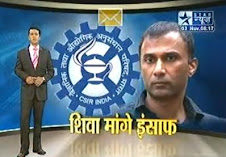Soleckshaw is a solar-powered rickshaw. This seems to be a novel concept as the idea is to remove drudgery of poor rickshaw puller. But, does this seemingly novel concept really designed to live up to its purpose? Or is it just a gimmickry that Indian politicians and bureaucrats are known to play for their own advantage?
- Soleckshaw is not completely driven by solar-powered batteries. In fact, the power of solar batteries is to assist rickshaw puller only when they are climbing uphill; rest of the time they are supposed to use manual labor. And, if they do rely on solar-powered batteries only, then that battery does not last long and soon drains out.
- Soleckshaw in its present technological life cycle costs much more than 2.5 times the normal rickshaw (this is after very conservative estimates). Can a poor rickshaw puller afford such a luxury? Will any bank give him loan for that? – It is a common knowledge that most rickshaws are owned by someone else. Why will those people pay abnormally huge cost for the sake of rickshaw pullers’ health? – And, even if they are willing to buy, THE PRODUCT is actually not even a partial solution (because of above stated reason – it still leads to drudgery).
- CSIR, our premier technological R&D institute, is not even capable of delivering a viable solar rickshaw. Their prototypes have been a huge failure. The only people to benefit from it are – S K Brahmachari and Kapil Sibal. The latter used those prototypes in his election campaign and has won handsomely. Brahmachari got many news items that praised him for such a novel concept.
- One can easily get electronic rickshaws at a competitive cost; but the wishful thinking of ‘green’ rickshaws is coming in the way of the primary goal – ‘removing drudgery of poor rickshaw pullers’. If CSIR leadership is so worried about ‘carbon credits’ why cannot they run their ACs powered by solar panels?? Does their ACs have energy ratings? Why is Ambassador – oil guzzling car – their choice of car?
- Lack of technological competence is evident in a recent policy decision by Pranab Mukherjee. He stated that no customs duty (and excise duty) will be levied on solar rickshaws. Customs duty?? – Is it not pathetic to think that now we have to import parts from abroad to build a cycle rickshaw?
- It is known that MNRE is considering a proposal to hugely subsidize these rickshaws. Why cannot they make a ‘novel’ product that is not sucker of tax-payers money?
- Dr. S K Brahmachari justifies that along with the above subsidy, rickshaw pullers can benefit from commercial posters that they can put at the back of the soleckshaws. Can those posters not be put at the back of any rickshaw (manual, electronic batteries or solar-batteries)? – Will it not be better that rickshaw pullers be empowered by giving soft loans to buy normal (but ergonomically designed) and/or cheaper electronic-battery powered rickshaws instead of hugely expensive soleckshaws?
BUT, S K Brahmachari and others want to be seen as progressive ‘green’ scientists at ANY COST…. So, why care about technological competency to deliver project, tax-payers’ money, and the true goal of health benefits to poor rickshaw puller?
